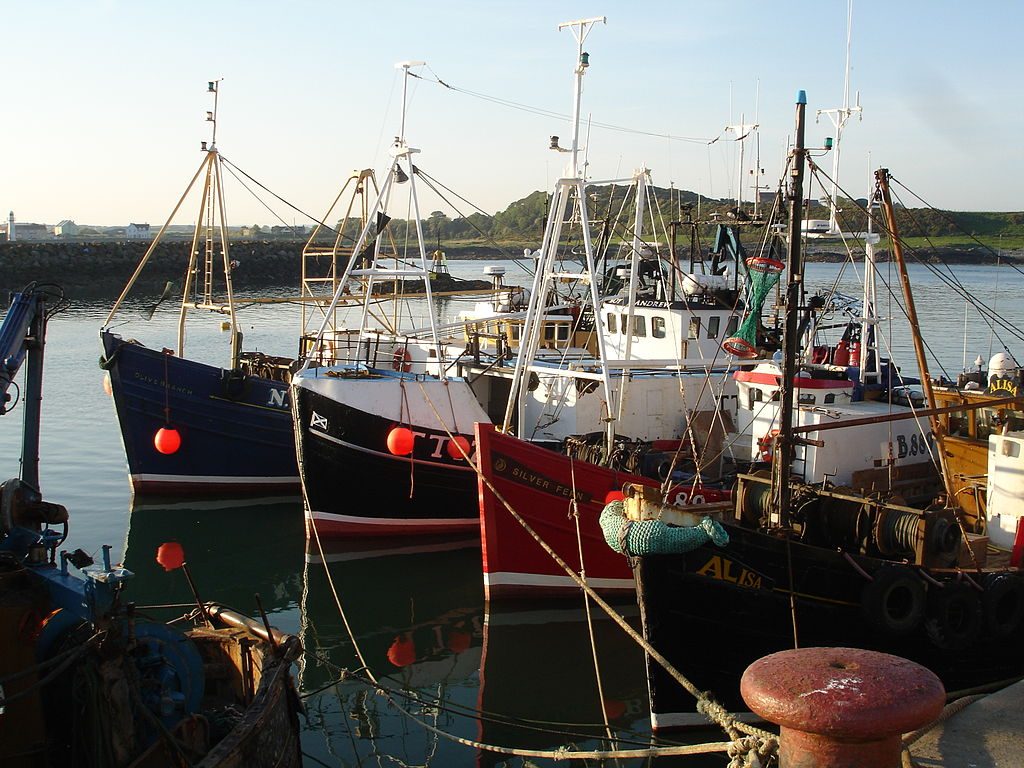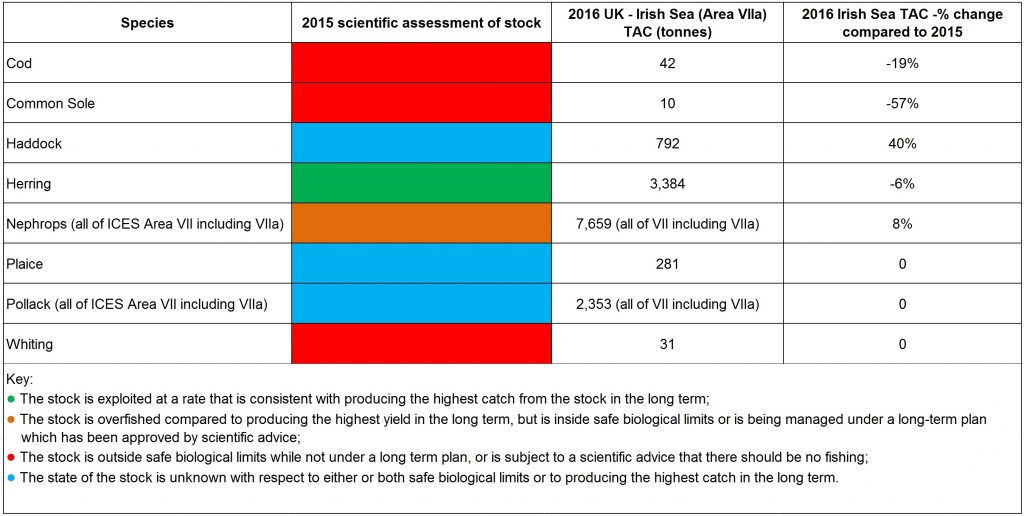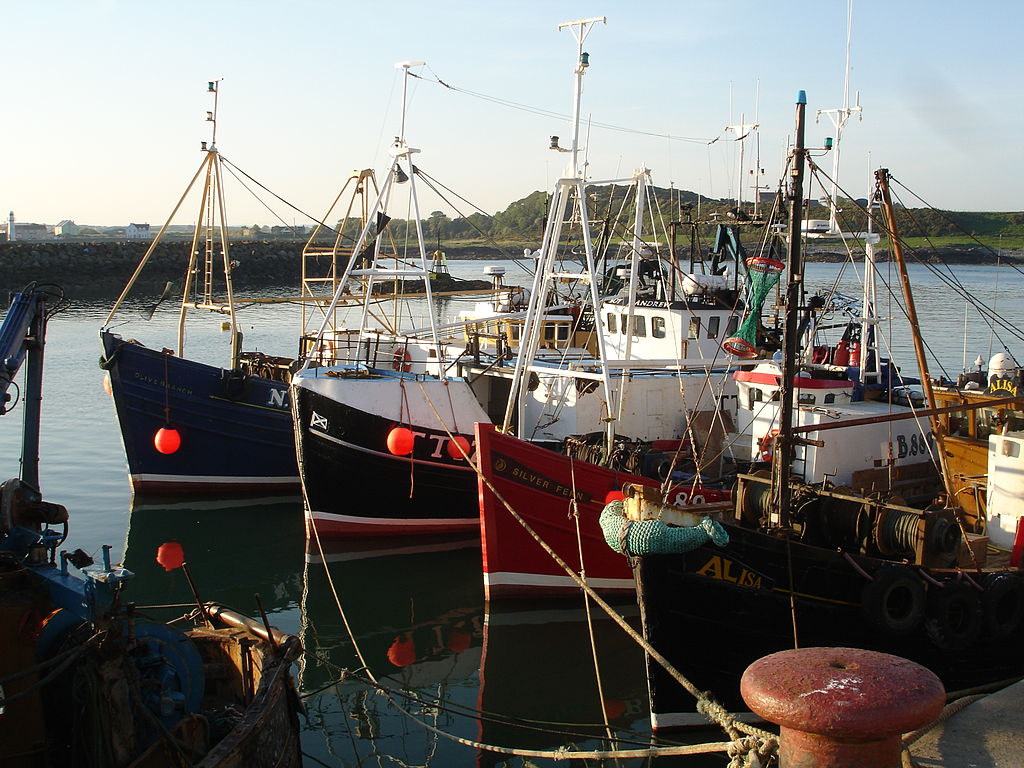A single species fishing industry
Despite not being particularly large in overall UK terms, the sea fishing industry in Northern Ireland makes a significant contribution to the economy of the three County Down ports of Ardglass, Kilkeel and Portavogie where the local fleet is mainly based. However, the local industry could face an uncertain future due to its heavy reliance on prawns.

Looking at the most recent data from 2014, the sea fishing sector here employed a total of 832 fishermen and the total value of the catch landed in Ardglass, Kilkeel and Portavogie equated to £21m. In terms of the actual breakdown of the catch landed by the local fleet in 2014, it is apparent that nephrops (prawns) make up the greatest proportion in terms of both volume and value at 8,700 tonnes (60% of the total catch) and £17.5m (83% of the total value) respectively.
The role of the EU in fisheries management
The apparent reliance on prawns could be viewed as a deliberate and voluntary decision by the Northern Ireland fishing fleet to focus on catching prawns, but such an assessment would not adequately explain what has actually driven this process. A key factor has been the EU’s Common Fisheries Policy (CFP), and more particularly, the fisheries management approaches that support the policy. In an effort to ensure that there is no overfishing, the CFP operates a mechanism to calculate the maximum amount of fish that can be removed from any fishery, called the Total Allowable Catch (TAC). These TACs are agreed by EU Fisheries Ministers in Brussels every December.
The actual decision on national TAC allocations is ultimately the responsibility of EU Fisheries Ministers but the process is based on scientific evidence. In the case of certain regions (e.g. Baltic, North Sea and North East Atlantic), the Commission draws upon advice provided by the International Council for the Exploration of the Sea (ICES).
TACs are allocated to actual physical areas of the sea as defined by ICES. Whilst boats from Northern Ireland can, and do, fish throughout these areas and further afield, providing they have quota to do so, the greatest concentration of current effort by the local fleet is on fisheries within ICES Area VIIa which covers the Irish Sea.
Key stocks under pressure
The 2015 scientific advice provided by ICES on the state of key commercial fish stocks within Area VIIa, along with the finalised UK TAC for 2016 and how this compares to the 2015 TAC, is highlighted in the table.
The table reveals that in relation to the scientific assessment of stock within the Irish Sea, only one of the species, namely herring, is currently being sustainably exploited in the long term. All of the other species are either being overfished (either inside or outside safe biological limits) or there is not sufficient data to accurately assess their status.
The size of the TACs for the species within the Irish Sea highlights why nephrops have become the main species that our local fleet relies on: it would not be possible to support the current industry if it relied on other species. This reliance on nephrops does, however, present dangers for the local fleet, as the current TAC could be drastically affected if there was a more negative scientific assessment of the stock. Within this context it could be better for the local industry if their fishing effort was focused on a wider number of species, but the current TACs restrict the ability for this to happen.

What can be done?
Better scientific data to establish the actual state of stocks (including those for which no data is available) will be crucial to understanding stocks and potentially increasing TACs for certain species and preserving them at current levels for others. The collection and provision of this data should be a priority for local fishermen and government if the industry is to have a long term future. Further, more could potentially be done to support fishermen to use selective fishing gears which would enable them to target specific species without catching other overfished or TAC restricted species.
These considerations form a context for developments following the EU referendum vote in June. There are considerable uncertainties for fisheries across the UK. Northern Ireland is not unique in the UK in having such a strong reliance on a narrow range of species and it remains to be seen whether an exit from the CFP will enable a broadening of the catch profile.



